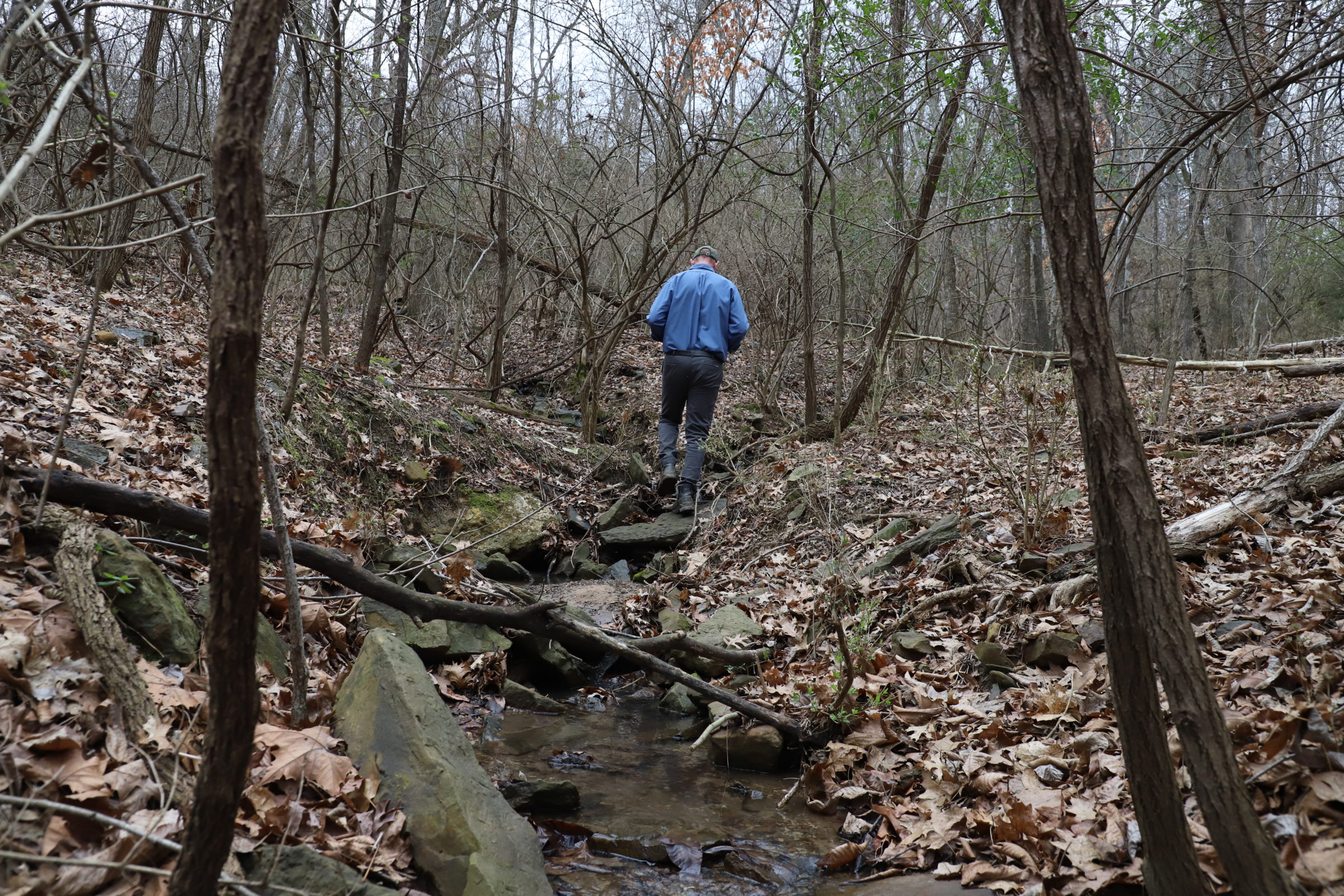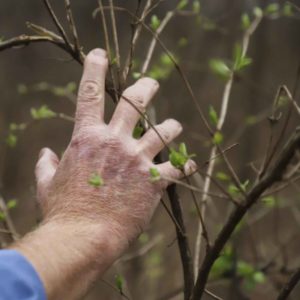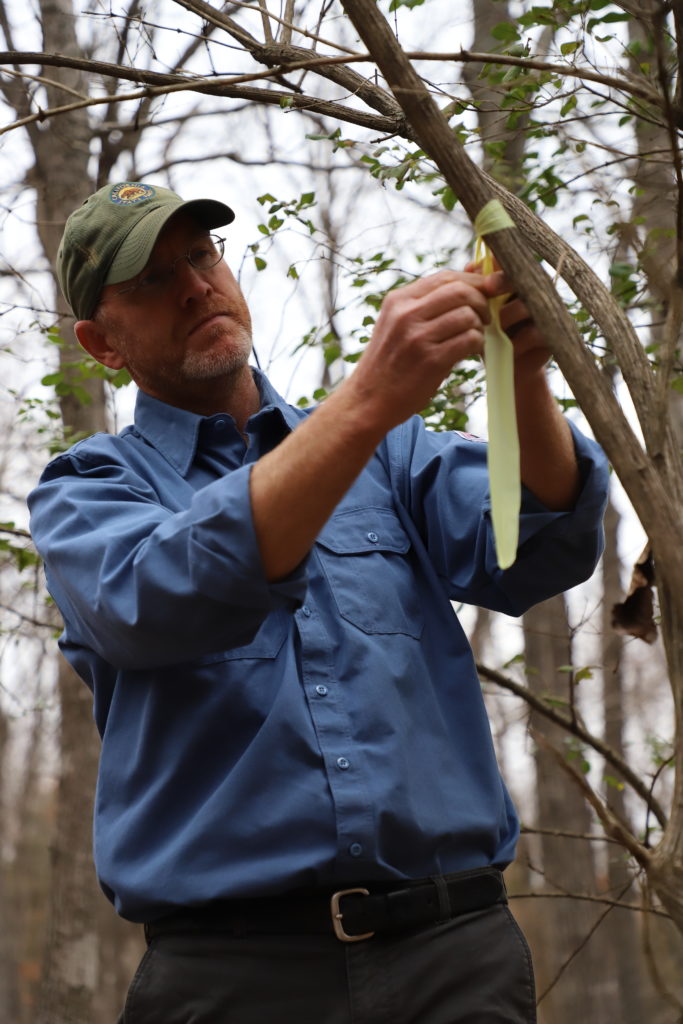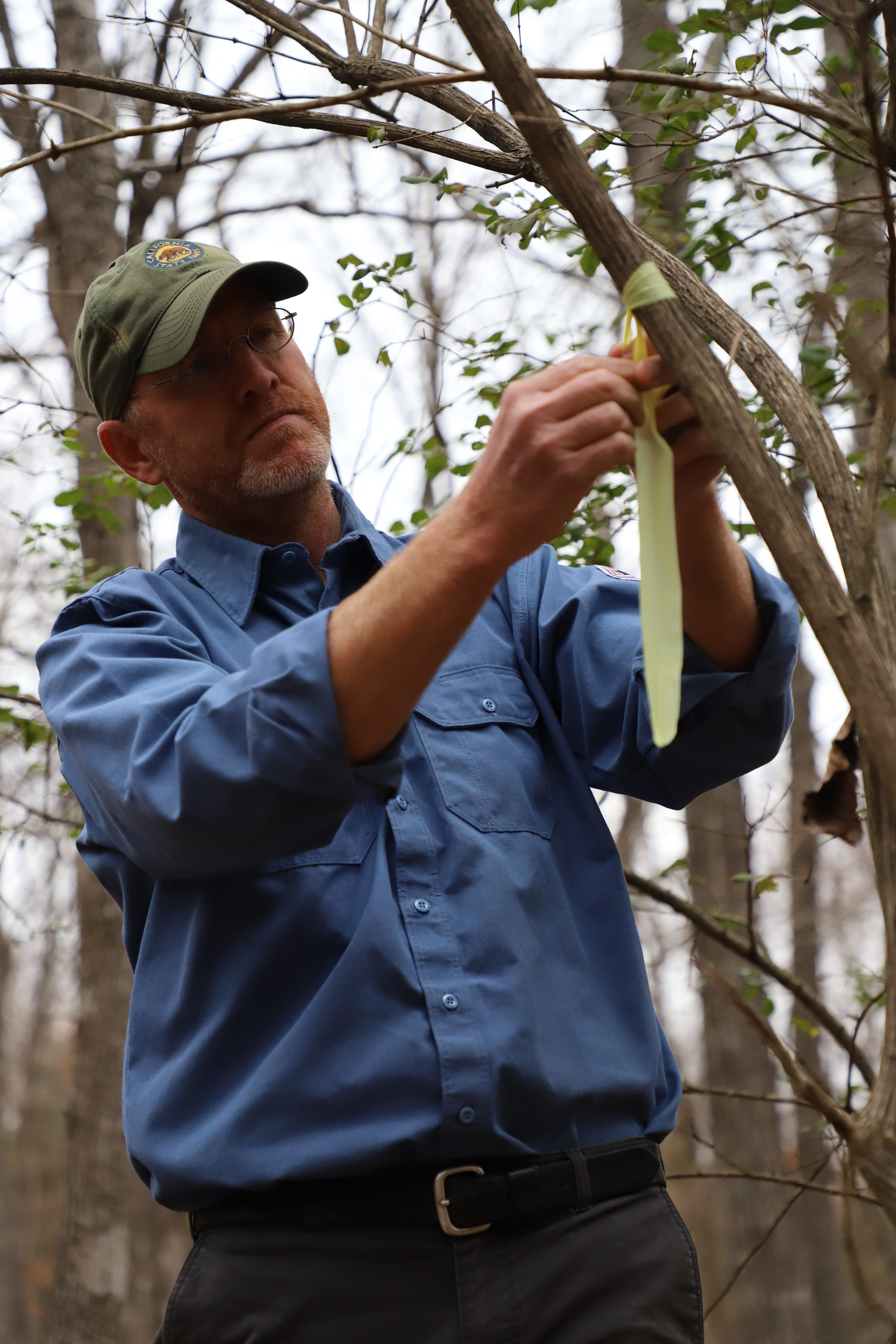
Nurseries had a beautiful new plant, perfect for Northwest Arkansas. Quick growing. Beautiful green leaves for most of the year. Little white flowers in the spring and shiny red berries in the winter. Growing easily in sun or shade with minimum care.
Gardeners couldn’t resist. Amur honeysuckle, also known as bush honeysuckle, was a perfect garden plant. Too perfect.
Fast forward a few decades, and bush honeysuckle and other ornamental landscape plants have escaped gardens and are displacing native plants and the animals that depend on them.
Find healthy habitat at these local spots
These local destinations use best management practices like the ones Isaac employs to maintain healthy habitat for wildlife. And they are great places for people to explore, too!
- Hobbs State Park Unlike most urban forests, Hobbs is selectively logged and invasive plants are managed through mechanical removal or fire. Isaac says: “You can see through the forest. That’s how you know that it’s a healthy forest.”
- Woolsey Wet Prairie Sanctuary On the west side of Fayetteville adjacent to a wastewater treatment plant, Woolsey is one of the most diverse places in the state with over 500 species representing threatened and vanishing North American habitat: wetland prairie.
- Wilson Springs Preserve Restoration work is in full swing at this newly opened natural area. In addition to wildflowers and lily ponds, locally made sculpture is integrated into the two miles of trail. Access from the south side of the parking lot at Fayetteville Sam’s Club.
The original version of this story by Sarah King with photos by Zac Trout appeared in Connection, our quarterly newsletter.

Learn more about the threat of bush honeysuckle in NWA



